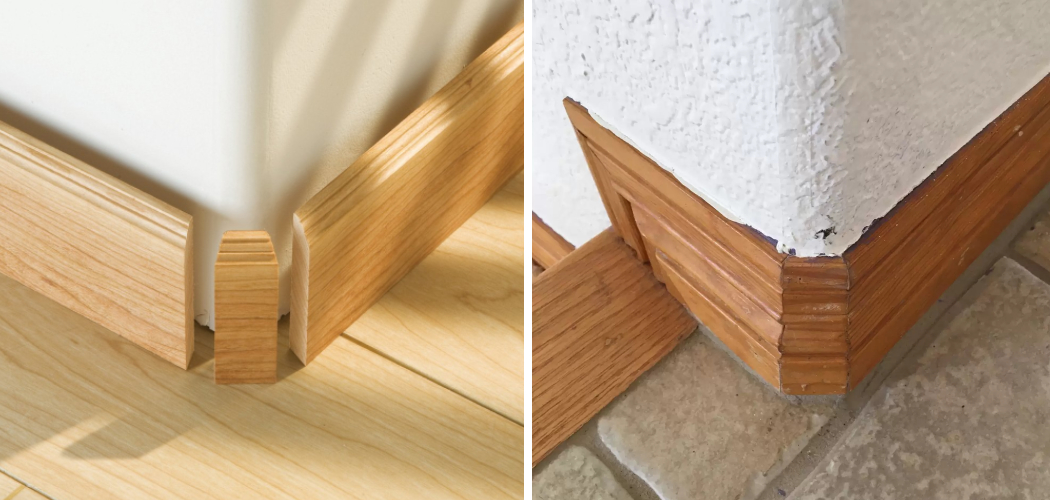Cutting baseboards for rounded corners can be tricky, especially if you don’t know the proper techniques. Rounded corners are often found in rooms such as living rooms or dining rooms, giving the space a unique look. Unfortunately, when it comes time to install the baseboard trim around them, many DIYers find themselves stumped.
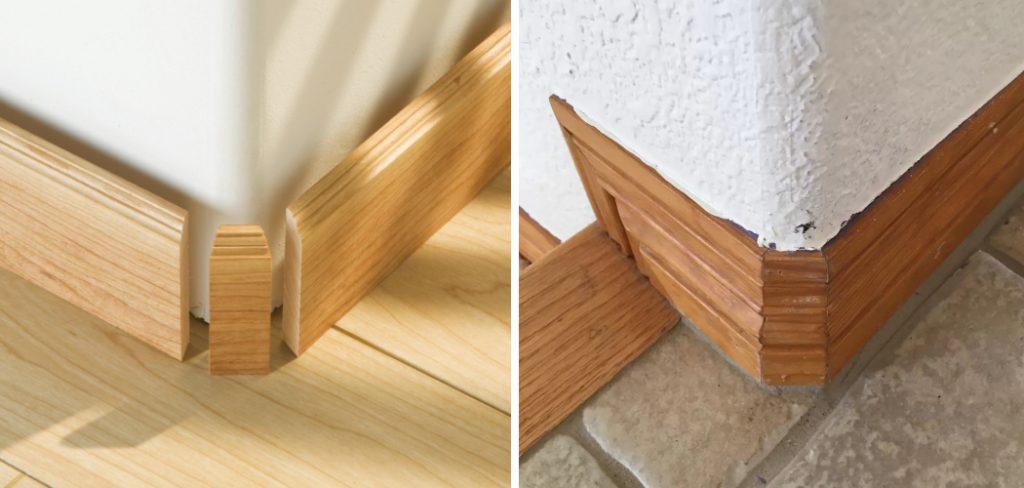
One of the biggest advantages of cutting baseboards for rounded corners is that it gives the finished project a much more aesthetically pleasing and professional look. Rounded corners create softer lines, making a room appear larger and more inviting.
Additionally, since you are actually taking time to cut each baseboard individually into its own piece, you can customize the size and shape of each piece to fit your room’s corner perfectly. In this blog post, You will learn how to cut baseboards for rounded corners in detail.
Step-by-Step Processes for How to Cut Baseboards for Rounded Corners
Step 1: Inspect the Corner
Before you start cutting, check the corner closely. Make sure that it is indeed rounded and not just two walls meeting at an angle. If the corner is rounded, use a protractor to measure its radius.
Step 2: Cut the Baseboard with a Miter Saw
Put on safety glasses before using any power tool. Measure out the angle of the baseboard on the miter saw according to the radius of the corner. Mark and cut it in one smooth motion. Once you have cut the baseboard, use a sanding block or belt sander to smooth out imperfections from your cuts. Make sure that the edges are as smooth and even as possible for a professional finish.
Step 3: Sand the Cut Edge of the Baseboard
Sand down the cut edge of your baseboard until it is flush with the wall. This will ensure that there are no gaps or uneven surfaces along the edges when you install it. Before you attach the baseboard to the wall, test-fit it first. Make sure that it fits correctly and looks good. If any adjustments need to be made, do them now before attaching the baseboard.
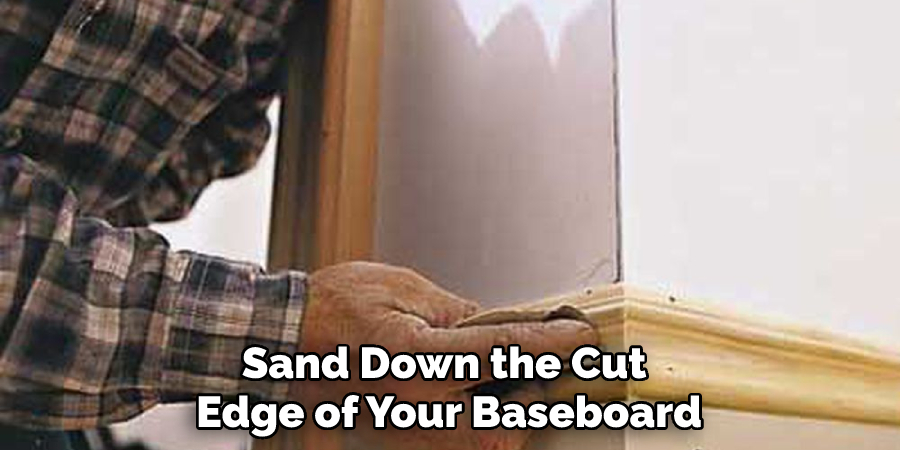
Step 4: Mark for Nails or Screws
Once you have determined that the baseboard fits properly, mark the wall and baseboard where you will place nails or screws. Attach the baseboard to the wall using a nail gun, hammer, or screwdriver. Make sure all of your nails or screws are evenly spaced and securely attached.
Step 5: Caulk Around the Edges
Once the baseboard is attached, use a caulking gun to fill in any gaps around the edges. This will help ensure that your baseboard looks neat and professional. Depending on the look you are going for, paint or stain your baseboard as desired.
Step 6: Install the Corner Pieces
Finally, install the corner pieces to finish off the look. Use nails or screws to attach them and ensure they fit snugly. Once you have completed all of these steps, your baseboards should be perfectly cut and installed for rounded corners.
Safety Tips for How to Cut Baseboards for Rounded Corners
- Wear safety glasses and work gloves when using a miter saw, jigsaw or other power tools when cutting baseboards for rounded corners.
- Make sure to measure twice before making any cuts to accurately cut the baseboard pieces to fit around the wall’s curvature.
- To ensure accuracy, draw a line along the miter saw’s baseboard cutting line.
- When using a power saw of any kind, use a clamp to secure the baseboard in place before making any cuts.
- Always unplug or disable the power source of your tools when you are not using them and before changing blades.
- Make sure to clean up any sawdust and debris from the ground or your workbench after finishing to prevent injuries.
- Keep children and pets away from power tools and other cutting materials when working on projects such as this one.

With these safety tips in mind, you can safely and effectively cut baseboards for rounded corners with a miter saw, jigsaw, or other power tools. Careful and accurate measurements are the key to success when it comes to cutting baseboards for rounded corners.
Are There Any Safety Guidelines You Should Follow When Cutting These Baseboards?
Yes, you should follow a few safety guidelines when cutting baseboards for rounded corners. Wear protective eye gear to protect your eyes from flying particles and chips of wood that may be created during the process.
It is also important to wear gloves to protect your hands from sharp edges. Also, be sure to make all necessary measurements prior to cutting so that you can safely and accurately make the cuts. Lastly, keep your workspace clear of any clutter to minimize the risk of injury.
Once all safety guidelines have been followed and measurements have been taken, you’re ready to begin cutting baseboards for rounded corners. To do this, use a circular saw or miter saw to make the appropriate cuts.
Mark the desired angles on the baseboard with a pencil, and make sure to double-check your measurements. Make sure to cut slowly to ensure accuracy and avoid unnecessary chipping of wood. After all, cuts have been made, sand down any rough edges for a smooth finish.
What Techniques Should You Use to Cut the Curved Sections of the Baseboard?
You will need to use a jigsaw or other hand-held saw for the curved sections of the baseboard. Mark out where to cut and then cut along that line. You may want to practice on a scrap piece of wood first. Ensure you wear safety goggles and gloves for protection when using a saw. A coping saw can also be used to cut the curved sections of the baseboard. However, this requires more skill and practice to get an accurate cut.
Use a router with a rounded bit attachment if you need to make a tighter corner. This will give you the tightest fit. Just trace the curve onto the board and then route along that line. When you have finished cutting, sand the edges down to get a smooth finish. Doing this will ensure that the baseboard looks neat and professional.
You can also use corner blocks on rounded corners. These are small pieces of wood with molded shapes that fit over corners. This is easier than cutting the board and requires no extra tools.
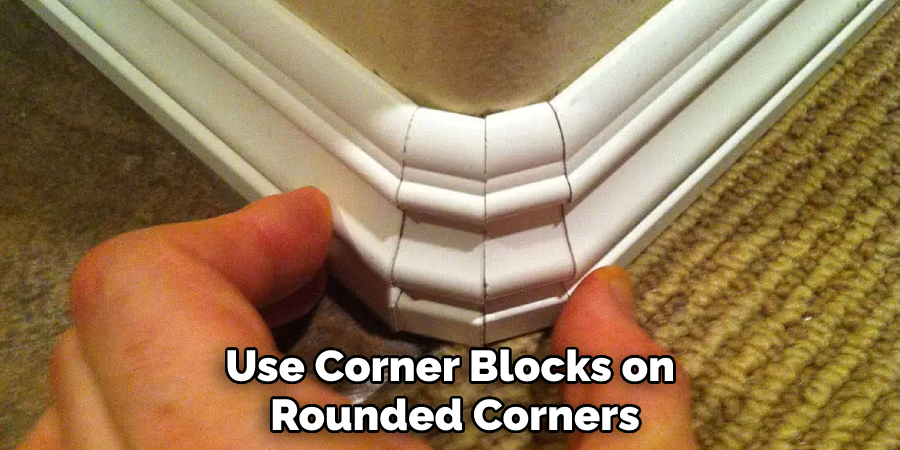
Are There Any Special Considerations You Should Keep in Mind When Cutting Around Radiators or Other Obstacles?
Yes, you should be sure to take extra care when cutting around radiators or other obstacles. First, measure the radius of the obstacle, such as a radiator or angle corner. Then use a ruler or square to draw lines along each side of the obstacle on either side of the baseboard.
Make sure to include the width of your saw blade in the measurements when drawing. Next, use a coping saw or jigsaw to cut along the line, keeping your saw blade level at all times for more accurate results.
Finally, you may need to sand any rough edges created to have a finished look. It is also important to remember that when cutting around radiators or other obstacles, it is best to cut the baseboard in one continuous piece before installing it.
This will ensure that your corners are uniform and secure. When cutting around any obstacle, you should take extra care to avoid making mistakes that could cause damage to the baseboard or wall. Proper measurements and using the right tools are essential for a successful baseboard installation.
Are There Any Potential Mistakes You Should Avoid When Cutting Baseboards for Rounded Corners?
When cutting baseboards for rounded corners, there are several potential mistakes that can be made. First and foremost, you should measure twice before making any cuts. Taking the time to double-check your measurements will help ensure that your cut is accurate and that the final product looks great when installed.
Another mistake to avoid when cutting baseboards for rounded corners is not adjusting the depth of your cut. When cutting baseboards, you need to adjust the depth of your saw blade so that it follows the contour of your wall and only cuts halfway through each board.
If you don’t ensure the depth is correct, you risk making an uneven cut that won’t fit properly. Lastly, you should always use a high-quality saw blade when cutting baseboards for rounded corners. Using a dull or damaged blade can cause the board to splinter and make uneven cuts. To get the best results, replace your saw blades regularly and keep them sharpened for optimal performance.
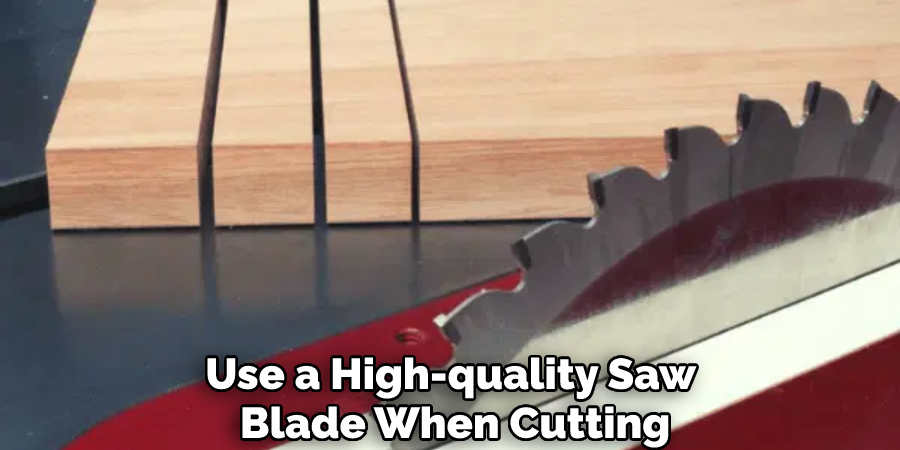
Conclusion
In conclusion, cutting baseboards for rounded corners is not a difficult task. With the right tools, you can create beautiful and accurate cuts that will look great in your home. All it takes is some careful preparation, practice with a few trials runs, and confidence in your own skillset.
Make sure to take measurements accurately and use appropriate protective gear while working on the project. With the right tools and careful preparation, you can make perfect cuts that are sure to impress anyone who enters your home. I hope this article has been beneficial for learning how to cut baseboards for rounded corners. Make Sure the precautionary measures are followed chronologically.
You Can Check It Out to Hide Baseboard Seams

